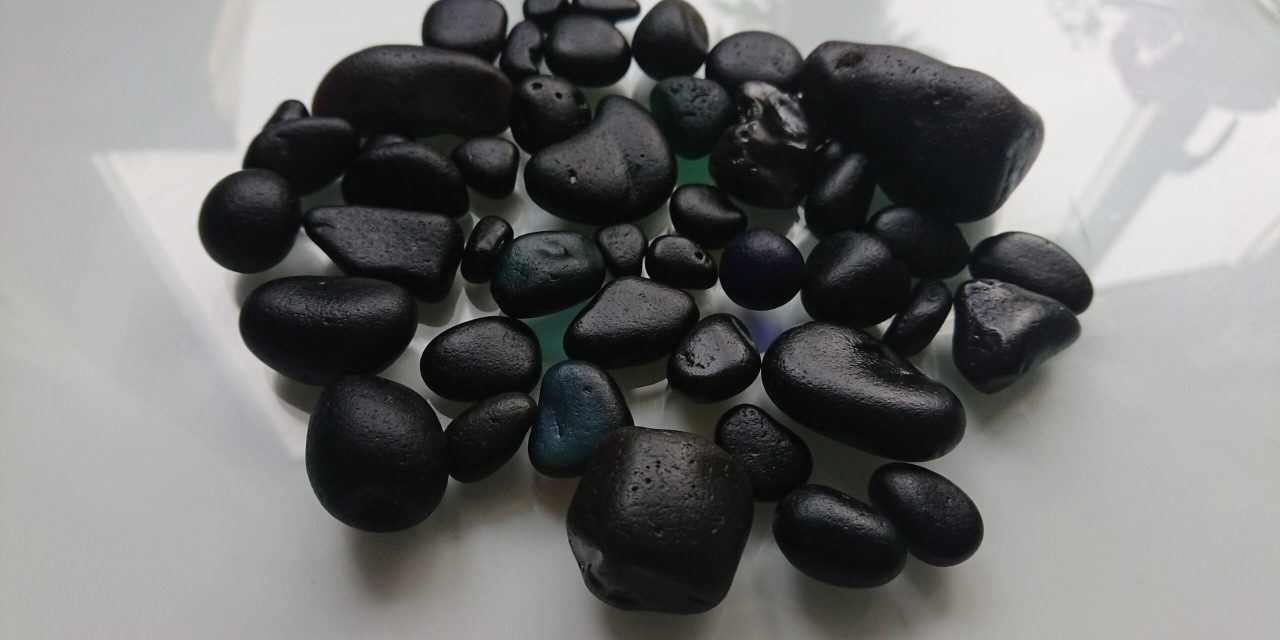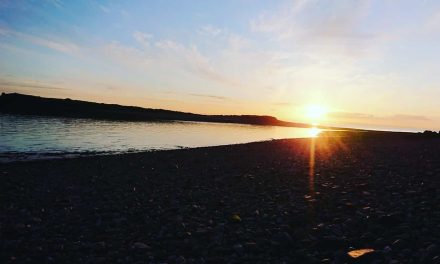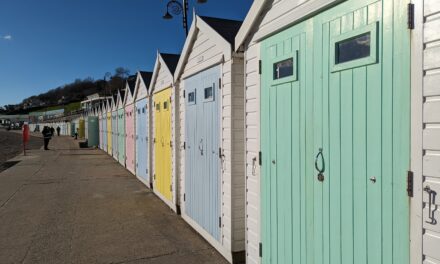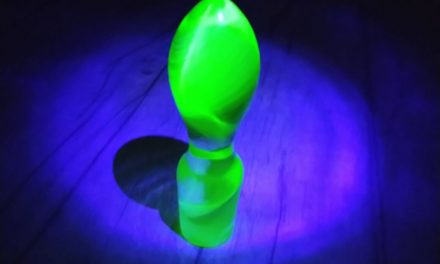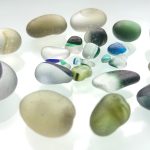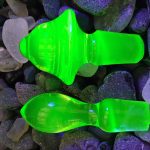Something that many people wonder about is what is “pirate glass.” There are so many different sea glass types and colours that it can be challenging to keep up with them all. If you have found a piece of what looks like black sea glass, you might be wondering how to find out if you have discovered pirate glass.
In this article, we will explain everything that you need to know about pirate glass: what it is, and even where you might be able to find some. Hopefully, this will help you see when you have discovered pirate glass, and you can find out exactly where it comes from.
What to expect from our article
- 1 What is Pirate Glass?
- 2 The history of black glass
- 3 Where does pirate glass come from?
- 4 How to tell how old pirate glass is
- 5 What is the rarest type of sea glass?
- 6 What colour is pirate glass?
- 7 Are black sea glass and pirate glass the same thing?
- 8 Where can I find pirate glass?
- 9 How to find pirate glass
- 10 How to tell if you have found pirate glass
- 11 What colours of pirate glass can you find?
What is Pirate Glass?
Pirate glass is black sea glass that was originally part of very old black glass bottles. Black sea glass was given the name “pirate glass” by beachcombers because it was thought that pirates drank from the bottles. It is not really known if pirate glass really came from pirates or not, but one could assume that it was purely because of the age of the bottles.
Water was often too contaminated to drink, so they would have consumed copious amounts of alcohol instead, like ale and rum. Rum was the most affordable and readily available of the alcoholic drinks, so that is what they took with them aboard their ships. Bottles of rum were often used back then as an essential item for survival at sea. Inside the bottles would have been a mixture of lime, sugar, and rum, which was consumed to prevent scurvy, so who knows, maybe pirates did drink from them, hence the name pirate sea glass.
The history of black glass
Early rum bottles were made in the Caribbean, making it really easy for pirates to get a hold of them. Piracy was widespread in this area, and rum would have been much too expensive to make on remote islands. Another great thing about rum is that it can be stored well, allowing it to last for long periods when out at sea.
The use of strong glass bottles to store alcohol when out at sea was essential as the conditions could become quite rough. This meant that in a situation where the bottles would be thrown around the place, they needed to be durable enough not to smash. Otherwise, the pirates and sailors would be left with nothing to drink. Interestingly, the sand used to make these bottles contains traces of natural iron oxide, which is why they turn green under strong light.
It is no coincidence that the glass is black, either. For weeks, if not months, these bottles would be out at sea, sometimes in direct sunlight. The contents would be protected by the thick black glass, which worked to preserve the liquor. Before and during the 1800s, black glass was widely used to make bottles that held alcohol and other drinks. Glassmakers would add things like iron oxides, manganese, and other components to the glass to help make it more durable. Not all black glass is green under a strong light. It can also be blue, red, or purple.
Where does pirate glass come from?
Pirate glass comes from a very long time ago when sailors, merchants, and pirates would transport goods from one place to another. The term “pirate glass” derives from the fact that these early black glass bottles were possibly drunk from by pirates.
During voyages, clean water would have been a luxury, and water that had been contaminated was not safe to drink. Because of this, alcohol was the most popular drink. Any bottles that went overboard will have broken down in the sea, washed up on beaches and harbours and turned into what we now refer to as sea glass. Pirate glass is still washing up onto the beach, but you have to have an eye for it to be able to spot it because pirate glass can look just like pebbles camouflaged on the beach.
How to tell how old pirate glass is
You can tell how old your piece of pirate glass is by how thick it is and the number of bubbles that are present inside it. Pirate glass is unlike many of the other types of glass that we can find on our beaches today because it was made much earlier. Due to the time period in which it was made, the glass was often hand blown and filled with bubbles. So, if the black shard of glass is quite thick and has lots of bubbles inside it, then it may date back anywhere between the early 1700s and the mid-1800s.
What is the rarest type of sea glass?
The rarest type of sea glass is the colour black. Many sea glass collectors will refer to this sea glass as being “true black”. More often than not, true black sea glass is either a dark amber or purple colour. It is extremely rare for the black sea glass that you find to actually be black due to the chemicals that were used when it was made. However, you cannot shine a light through some of the older glass bottles because they are so dense.
What colour is pirate glass?
Pirate glass can be found in a variety of colours, but it is usually dark olive green, dark purple, or amber in colour. Pirate glass often appears to be black, but it actually isn’t. When you hold it up to a penetrating light, you will be able to see what its actual colour is. Even light cannot always penetrate the bottle, and the only way to determine the colour is to break it open. However, we beachcombers would never do such a thing.
Glass makers would have added specific metals to the glass that would have changed the colour of it. The colour that would have been created would depend on what type of additive was used. Some of the things that would have been added to try and achieve the black colour were iron oxide, coal, and ash. The dark colour of the bottles was great for keeping the sunlight out, which would actually help to preserve the alcohol.
Are black sea glass and pirate glass the same thing?
Yes, pirate glass and black glass are the same, created from old black glass bottles. This type of sea glass looks black to the naked eye, but its actual colour can be revealed only when it is held up to the light. Most of the time, pirate glass will be a dark olive green colour, and you will usually be able to see air bubbles inside it. Many people don’t even notice that they have spotted black sea glass on the beach because it can appear to be nothing more than black pebbles.
Where can I find pirate glass?
You can find pirate glass in places that were most common for sailors or pirates, like Bermuda. Bermuda is filled with pirate glass, and it can be more commonly found there. Something that is often found here is bottle bottoms, which is the thickest part. The most commonly found colours of pirate glass that are found in Bermuda are olive green and amber. The rarest colours of pirate glass to be found there are deep purple and blue, but these are not found as often.
Another place where you can find pirate glass is in North Carolina. Ships were often lurking around the Outer Banks; where there were ships, there were bottles. These bottles have been thrown around in the sea off Hatteras Island for hundreds of years, and they often wash up on the shores near here.
Even though there are some places where you are more likely to find pirate glass, it can be found all over the world, which is why you should always keep an eye out when you are hunting for sea glass. The best places to look are historical harbours; these were places of high traffic, either by people or shipwrecks.
How to find pirate glass
When you are out looking for pirate glass, you should be really careful not to look over it accidentally. Many people will mistake pirate glass for black rocks, but it is always worth checking, just to be sure. Pirate glass can be pretty big, so if you see a large black chunk in the sand, don’t dismiss it straight away, as it could be sea glass. There are ways to tell if it is indeed pirate glass. They tend to stay slick once the tide goes out, but they also have a glittery effect that stones don’t have. But the best way to tell is by shining a strong light through it.
How to tell if you have found pirate glass
If you are unsure if what you have found is pirate glass, you should hold it up to the light to see if you can see the other colours. If you notice that different colours are shining through, then it is definitely sea glass. You might also notice a glow around the edges, which can help you to identify the pirate glass. As well as this, any signs of bubbles in the glass will indicate that it was hand-blown, which makes it much more likely to be pirate glass.
Something to be aware of is that sometimes the glass will be so thick that the light is unable to penetrate it, so this method may not always work. In this case, the only way to find out the colour would be to smash it open, and we can understand why most people would not want to do this. So, in some cases, you may never find out if your piece of pirate glass is genuine, but sometimes the mystery is what keeps things exciting.
What colours of pirate glass can you find?
Some of the colours that you can find among your pirate glass are brown, green, red, purple, blue, amber, and more. When chromium and iron are added to glass, it will turn a vibrant green colour. If enough of these minerals were to be added to the mix, the colour would become a dark green. If sulphur and iron were added, the colour would be amber.

